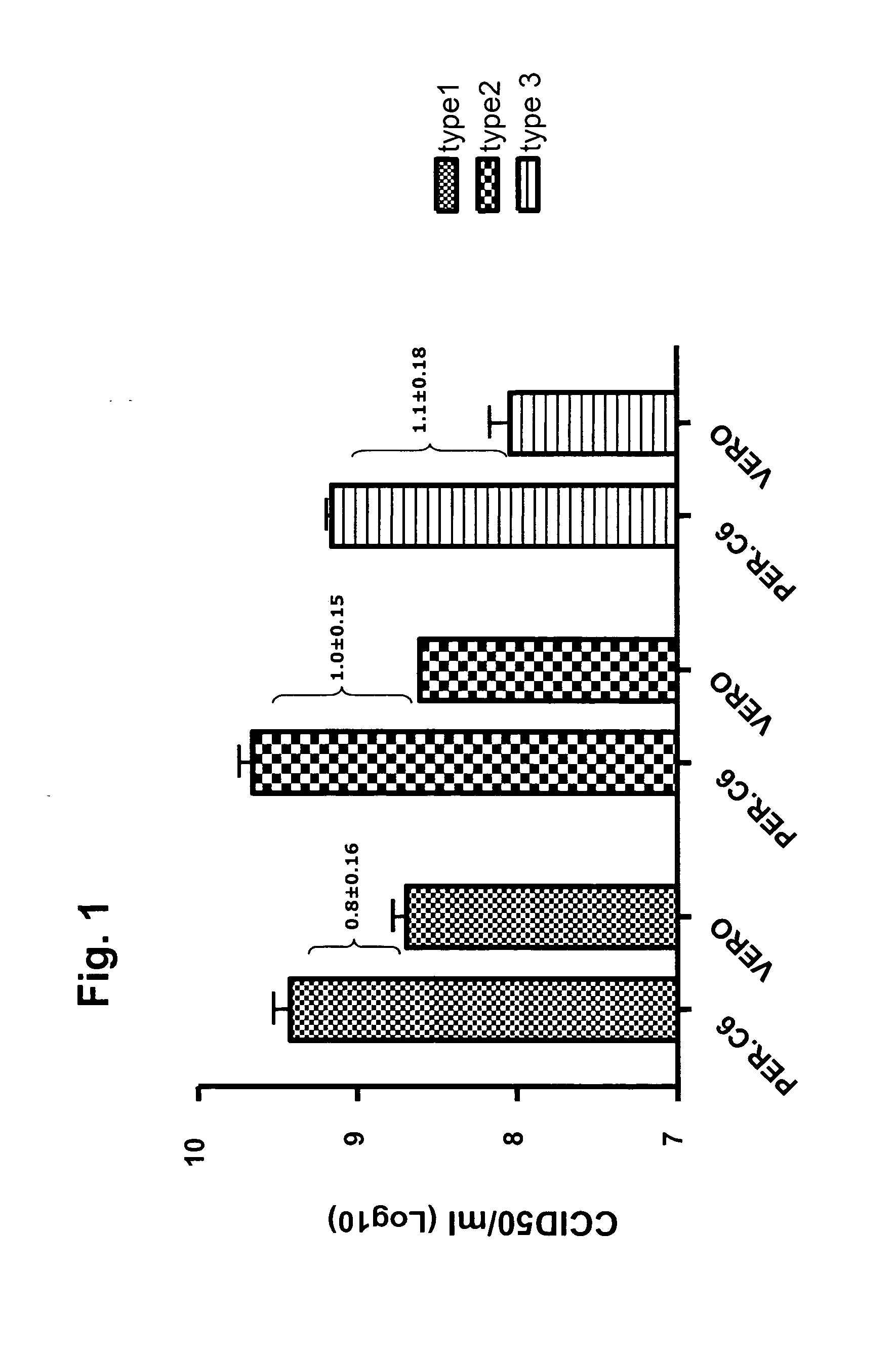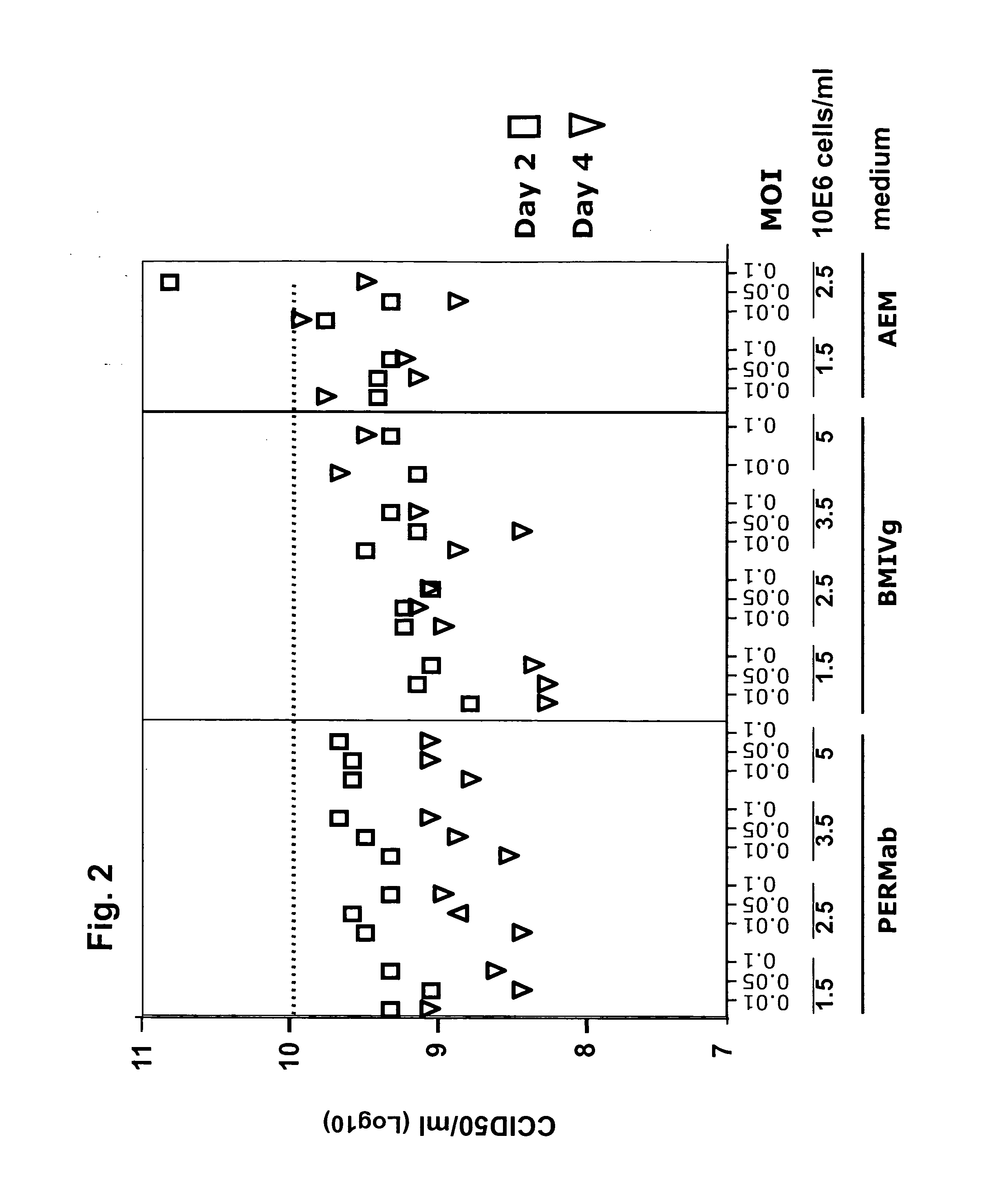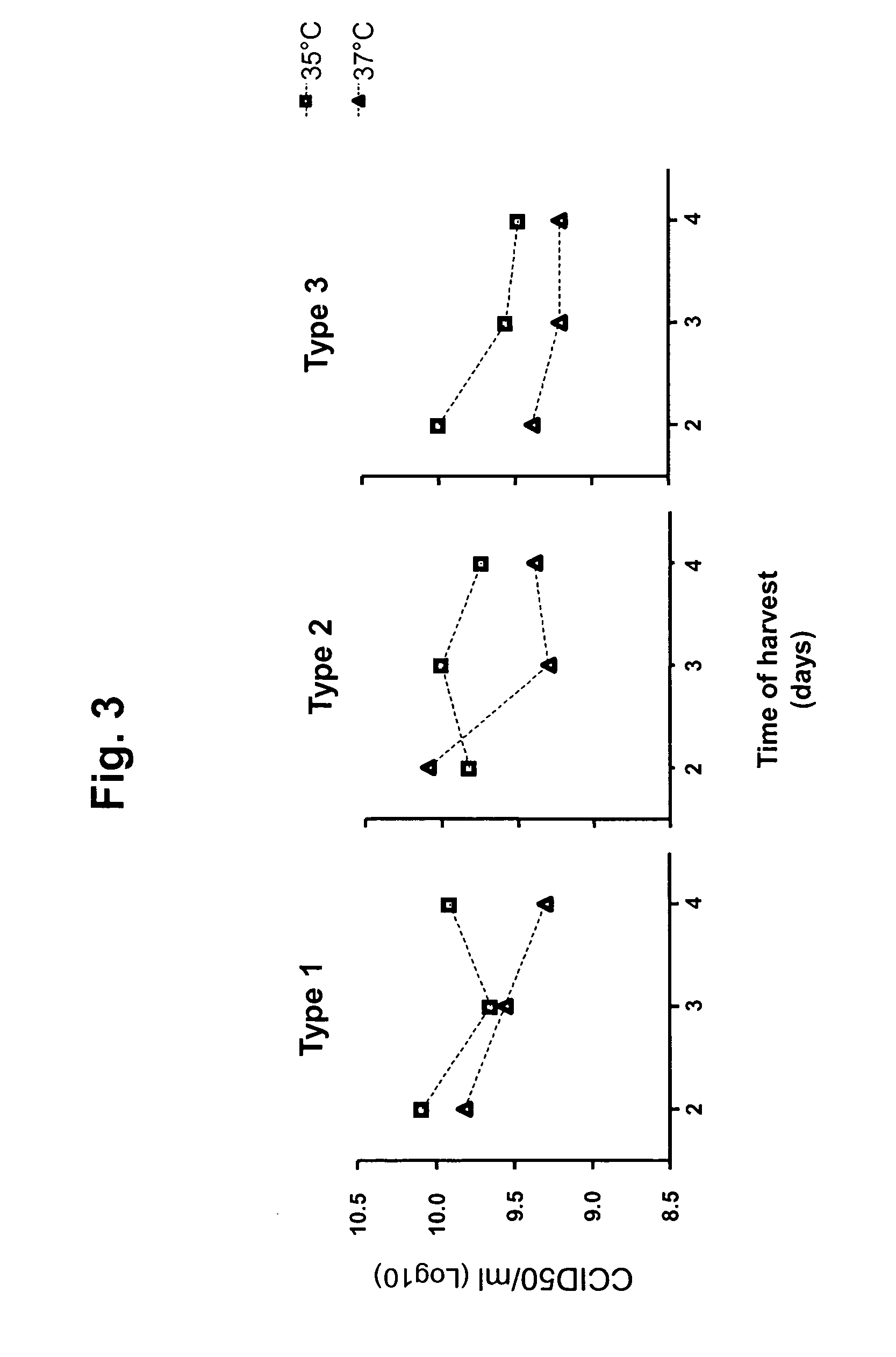Production of poliovirus at high titers for vaccine production
a technology of vaccine production and poliovirus, which is applied in the field of cell culture and poliovirus production, can solve the problems of paralytic poliomyelitis, high contagious poliomyelitis, and occasional recipients suffering from vaccine-associated paralytic poliomyelitis (vapp)
- Summary
- Abstract
- Description
- Claims
- Application Information
AI Technical Summary
Benefits of technology
Problems solved by technology
Method used
Image
Examples
example 1
Efficient Production of Poliovirus on Adherent PER.C6 Cells
[0071]To test propagation of poliovirus on adherent PER.C6 cells and generate virus stocks, poliovirus type 1 (Brunenders), type 2 (MEF-1) and type 3 (Sauckett), were obtained from SBL (Sweden). Titers of these stocks, each produced on Vero cells, were around 106 CCID50 / ml. PER.C6 cells (Fallaux et al., 1998) were grown in culture medium (DMEM with 10% FBS and 10 mM MgCl2). Three T175 flasks were seeded with 30×106 PER.C6 cells / flask in 25 ml culture medium for each type of poliovirus and inoculated the next day with a multiplicity of infection (MOI) of 0.1 (0.1 CCID50 / cell) at 37° C. and 10% CO2 in a humidified incubator. Three days later, cells and medium were harvested and crude lysates were prepared by two freeze / thaw cycles. Following centrifugation to remove the cell debris, supernatants were divided in aliquots and stored at −80° C. In parallel, one T175 flask was seeded with 6.25×106 Vero cells in 25 ml Vero cell cul...
example 2
Efficient Production of Poliovirus in PER.C6 Cells in Suspension
[0076]To investigate the propagation of poliovirus on PER.C6 cells in suspension, small scale experiments were performed to test different culture media, multiplicity of infections (MOI) and time of harvest (TOH). Hereto, PER.C6 cells were cultured in three different media: AEM (Invitrogen), BMIVg (commercially available as Permexcis™, from Lonza) and CDM4PERMAb (Hyclone). On the day of infection, cells cultured in one type of medium were counted and reseeded in the same type of medium at different cell densities (1.5, 2.5, 3.5 or 5 million cells / ml) and infected with different MOIs (0.01, 0.05 or 0.1 CCID50 / cell) at 37° C. in a humidified incubator on a shaking platform. The platform (IKA KS 260) had a 10 mm orbital diameter and was used at 100 rpm for 125 or 250 ml shake flasks filled with 15-20 ml medium. For AEM medium, cells were seeded at 1.5 or 2.5 million cells / ml since AEM did not support higher cell densities....
example 3
Yield of Poliovirus on Suspension PER.C6® Cells Increases at Higher Cell Density
[0079]To study if a further increase in cell density leads to an increase in virus titer, productions with 2.5×106 cells / ml were compared to 10×106 cells / ml. Hereto, PER.C6® cells in PERMAb medium were seeded in 15 ml volume in shake flasks at the indicated cell densities and infected with 2 CCID50 / cell of poliovirus type 1 in triplicate. After 24 and 48 hrs cells and medium were harvested and cleared lysates were prepared by freeze / thawing and centrifugation as described above. In addition to the previously tested temperatures 35 and 37° C., the experiment was also carried out at 33° C.
[0080]Analysis of the titers by CCID50 assay (FIG. 4) confirmed that the yield was improved when cells were infected at density of 10×106 cells / ml compared to 2.5×106 cells / ml. Best titers were obtained at 35° C. irrespective of cell density or harvest day. Furthermore, and indicative for the efficient propagation of poli...
PUM
| Property | Measurement | Unit |
|---|---|---|
| time | aaaaa | aaaaa |
| time | aaaaa | aaaaa |
| temperature | aaaaa | aaaaa |
Abstract
Description
Claims
Application Information
 Login to View More
Login to View More - R&D
- Intellectual Property
- Life Sciences
- Materials
- Tech Scout
- Unparalleled Data Quality
- Higher Quality Content
- 60% Fewer Hallucinations
Browse by: Latest US Patents, China's latest patents, Technical Efficacy Thesaurus, Application Domain, Technology Topic, Popular Technical Reports.
© 2025 PatSnap. All rights reserved.Legal|Privacy policy|Modern Slavery Act Transparency Statement|Sitemap|About US| Contact US: help@patsnap.com



